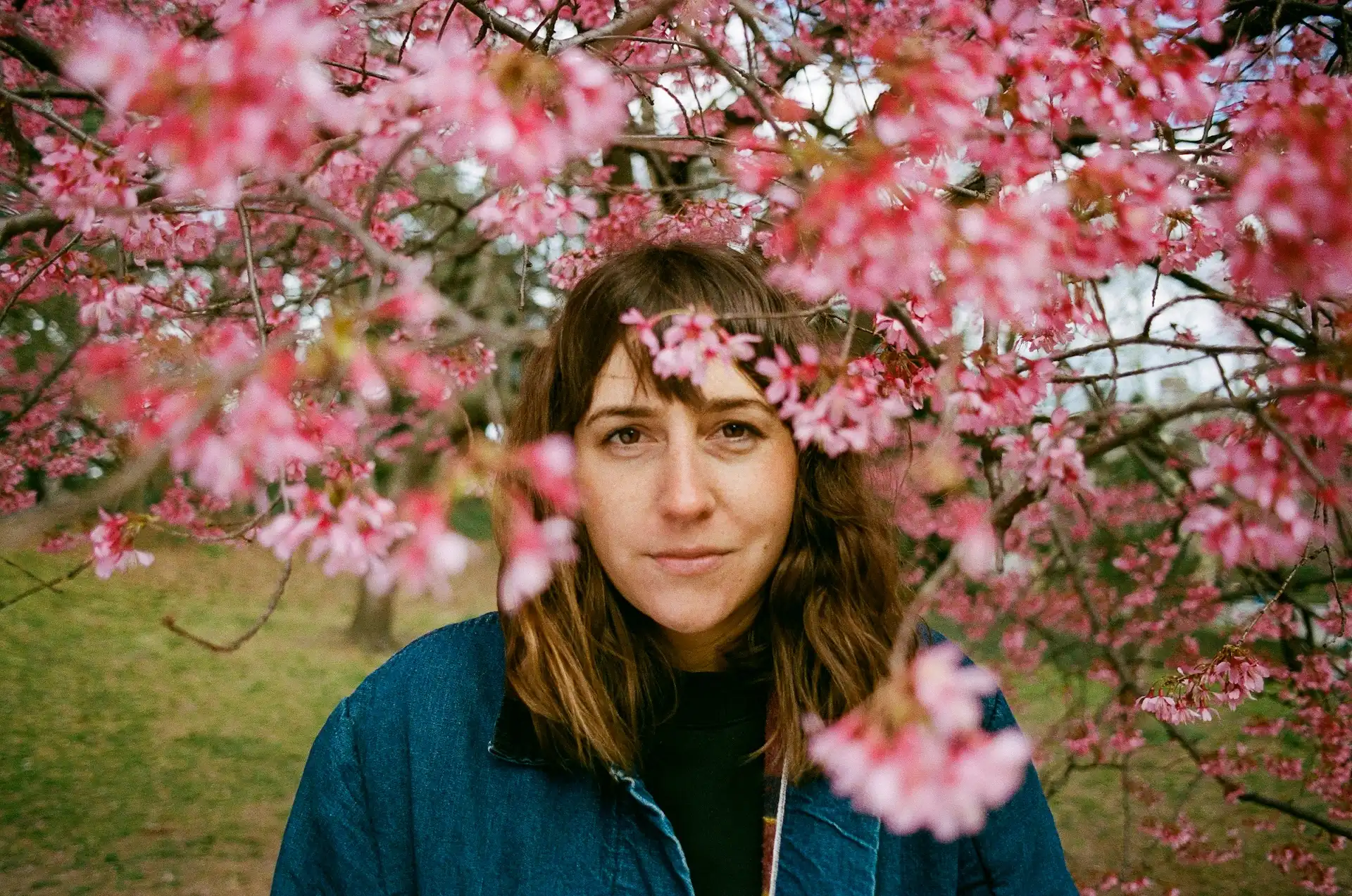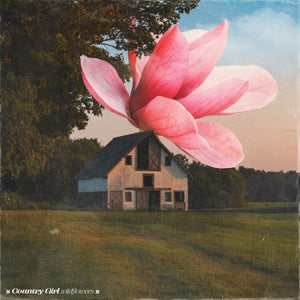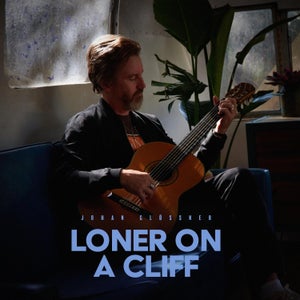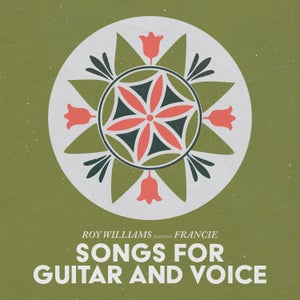Discover the best new country music in 2024: Kylie Dailey, Wildflowers, and more
Country music is big business in 2024. Learn about its history, why it’s still so popular, the different genres, and some of the best new country music artists.

Country music’s enjoyed an explosion in popularity over the past few years. Learn why it’s so hyped, the difference between its many subgenres, and where to find the best country music for your content. Plus, get the scoop with our exclusive chat to rising star Kylie Dailey.
We’ll cover:
- The history of country music
- What are the different country music genres?
- Why is country music so popular in 2024?
- How to find the best country music for your content
- Five elite-tier country songs for your content
- Introducing: Kylie Dailey
The history of country music
Country music means different things to different people. Some folks think of country as purely hoedown tunes, while others have a broader scope. As with most of these things, the truth sits in the middle.
Country music found its feet in the American South and Southwest during the 1920s, officially starting in Bristol, Tennessee. It arrived fully formed as a storytelling genre: this style of music was made to spin yarns, to tell tall tales about working life, the grind, heartache. Instrumentally, it focused on string instruments like the banjo, fiddle, acoustic guitar, and lap steel guitar, with a well-placed harmonica or piano thrown in for good measure.
Most people will be familiar with the Nashville sound, popularized by country music legends like Jim Reeves in the 1950s. Nashville country is slicker than the honky-tonk that came before, swapping rough-and-ready rhythms for sweet melodies and orchestration. This made it immensely popular with the public.
Country music mutated from there, most notably when Sun Records nurtured rockabilly giants like Johnny Cash and Roy Orbison in the late ‘50s. Cash eventually swerved away from the record label machine, birthing the outlaw country movement alongside artists such as Willie Nelson, Waylon Jennings, and Kris Kristofferson.
Later came country rock and 1990s country music, the latter of which saw Garth Brooks take country to stadium-sized audiences. Alternative country and country pop drove the genre to the present day, with megastars like Taylor Swift bringing this little genre to the hugest stages imaginable.
In a nutshell, country music is so much more than a cowboy hat. It can be a heartfelt ballad or a knees-up dance, an electronica-influenced hit or an orchestral powerhouse. Forget about it being an American-only tradition — country music can be found everywhere from Australia to Sweden, the UK to Japan. It’s a global phenomenon now.
What are the different country music genres?
As you might have guessed, country music has enough subgenres to keep purists arguing for hours. We won’t be able to cover them all today, but we’ll run through a few of the key styles below.
Early country
Bands like The Skillet Lickers made waves as commercial recorded music became more common in the 1920s and ‘30s. Their brand of early country took folk songs people already knew — music they heard in bars, on the street — and gave them a new lease of life. If you were to liken it to anything, it’d be something like Irish traditional music.
Country blues
Country blues is another old-timey style, focusing on a solo blues vocal and underpinning it with finger-picked guitar, maybe some piano or harmonica. It’s sparse and unique, often used as a catch-all to describe those groundbreaking, early forms of blues like Memphis and Delta blues.
Honky-tonk
Honky-tonk music is mainly associated with, well, Honky Tonks. These are bars in which country music is played — mostly piano-driven, upbeat ragtime numbers. Of all the lively characters within the genre, Hank Williams is the best-known honky-tonker, and one of the biggest country legends full-stop.
Bluegrass
Bluegrass is the style often associated with ‘old’ country, played on acoustic string instruments and drawing influence from English, Irish, and Scottish folk music. It came from Appalachia in the mid-’40s, and is a little jiggier and upbeat than most other country subgenres. Bill Monroe is the groundbreaking bluegrass artist, but if we’re being real, most people’s thoughts on the subgenre come exclusively from memes of the below scene in Deliverance.
The Nashville sound
Honky-tonk was out in the late 1950s — chilled-out tempos, crooning, and heart-swelling orchestration from Nashville, Tennessee was in. The Nashville sound is a stark contrast to country music’s origins, designed to deliver hits from artists like Jim Reeves.
The Bakersfield sound
Bakersfield country popped up in Bakersfield, California during the 1950s. It’s a more raw, electric flavor, honky-tonking against Nashville country’s shiny production values. Merle Haggard, Buck Owens, and Wynn Stewart are all timeless, classic examples of the Bakersfield sound.
Rockabilly
Rockabilly is the one that gets folks dancing. The one with the double bass, the doo-wop vocals, the rhythm and blues, the boogying piano riffs — it’s such a good time. Elvis Presley, Johnny Cash, and Bill Hailey and His Comets helped popularize the genre, which has since evolved into odd little corners like psychobilly.
Country folk
Country folk is a subgenre of a subgenre, to be fair. The term came into use around the 1970s, when Bob Dylan’s acoustic work started impacting new musicians. Broadly, country folk is quieter, subdued folk music with country instrumentation, like a banjo or fiddle.
Outlaw country
Outlaw country reared its head in the 1970s and ‘80s, spearheaded by big-ticket artists like Johnny Cash and Willie Nelson. As you might have noticed, some of these subgenres are less about the sound and more about the attitude. Outlaw falls into that category, bucking against commercial country and leaning more toward rockabilly and honky-tonk.
Country pop
As the name suggests, country pop is built to reach mainstream audiences. Growing from Nashville country, it rolled with the times and incorporated contemporary pop stylings: Dolly Parton’s 9 to 5 gave way to Shania Twain, The Chicks paving the road for Taylor Swift. Nowadays, country pop covers a broader canvas than ever, bringing in influence from far-flung genres like hip-hop and electronic dance music.
Why is country music so popular in 2024?
Country music’s always been popular, sure. That said, its upswing in the past five years has been hard to ignore, considering the amount of young people gravitating to the genre — especially Gen Z.
You could point to Taylor Swift, whose beginnings as a country-pop artist shine more light on the genre. You could also chalk it up to Lil Nas X’s 2019 country-trap hit, Old Town Road. The song gained traction in late 2018 as part of the ‘Yeehaw Agenda’ TikTok trend, but found new life the following year, when it was re-released featuring Billy Ray Cyrus. It ultimately won multiple awards, including two Grammys.
Since then, we’ve seen Beyoncé’s Americana album, Cowboy Carter. Post Malone dipped into country music with his F–1 Trillion record, while icons like Willie Nelson and Dolly Parton worked with newer artists like Orville Peck and *checks notes*...Pitbull? And it all rocks.
This music is popular because it’s awesome, of course. But the whole country aesthetic — the fashion, the outlook, the lifestyle — makes it timeless.
How to find the best country music for your content
Struggling to find country music for your content? Don’t sweat it. We’ve got you covered:
- Open the Epidemic Sound player — if you’re not signed up, you can get started here.
- Think about what tone you’d like for your country music. You can search the player for a specific vibe — browse moods like laid-back, hopeful, countryside, sentimental, or restless.
- Consider the related genres that would fit your country music brief. Try looking for genres like straight-up country, but don’t be afraid to delve into pockets like Western, Americana, country folk, country blues, and bluegrass.

Looking for a shortcut?
If you want to pick and mix the best country music from a playlist, we can help you out. Epidemic Sound’s music experts have curated playlists for:
- Cowboycore: Shooting on location in a dust-choked desert? Isolated mountain? A simple meet-cute? Whatever you’re capturing for your content, this playlist’s got the tunes.
- Nashville Pulse: Bluegrass? Country rock? Americana? It’s all here.
- Country Pop Essentials: Whether you’re looking for a brash country-pop banger or a tempered, folky soundtrack, the songs in this playlist all have one thing in common: hooks.
- Cinematic Western: If your content needs more Ennio Morricone and less Garth Brooks, this playlist’s got the goods — it’s the perfect balance of gritty and epic.
Still need convincing? Check out our catalog of more than 50,000 tracks and 200,000 unique sound effects and variations below — we’re sure you’ll find what you’re looking for.

Five elite-tier country songs for your content
Now that we’ve gone through what country music is, the different subgenres, and why it’s so popular, let’s get down to business. Here are five elite-tier country songs to take your content to the next level.
Kylie Dailey – Be the Cat
As we’ve covered, country music isn’t all yee-hawing and rootin’-tootin’. Kylie Dailey’s Be the Cat is a subdued Americana track that grazes corners of pop, folk, blues, and soul along the way.
The cleanly produced vocals cut like a knife through butter, at odds with the softer, stripped-back instrumental. The result is still an undeniably organic song that could soundtrack a high-budget ad just as well as it could a mumblecore film project — it’s truly rare.

Wildflowers feat. Easton – Country Girl
Appropriately released on Valentine’s Day 2024, Country Girl is modern country music to a T. Wildflowers feat. Easton have combined all of the elements that make the genre so well-loved today: lyrics about someone way out of your league, upbeat verses, and shouting ‘Guitar!’ immediately before a solo.
Capped off with some slidey pre-chorus guitar and enough vocal twang to tune an instrument, Country Girl blends the old with the new — a great choice for hopeful, bright content.

Johan Glössner – Loner on a Cliff
It’s giving Kevin Costner in a cowboy hat, Kurt Russell riding into town and fighting cannibals. Johan Glössner does what so few can with Loner on a Cliff, using that Spaghetti Western cadence and instrumentation without ever feeling, well, tacky.
It’s so easy to throw a harmonica on something and call it a day, but Glössner’s atmospheric world-building gives this track raw authenticity. It makes Loner on a Cliff ideal for any large-scale, cinematic content you have in mind.

Roy Williams feat. Francie – Martha’s Song
Everything about Martha’s Song is just so warm. Roy Williams’ gentle duet with Francie gives a whole new meaning to the word ‘tender’, those slight tremolo strings and faint arpeggios giving the two singers room to breathe. What we’d give for someone to sing about us the way they sing about Martha…

Staffan Carlén – Tennessee Gardens
Sometimes, it takes one tiny earworm to hook someone in. Staffan Carlén knows what we’re talking about — for all of Tennessee Gardens’ lush guitar and subtle percussion, the two-second whistling refrain is what stands out. It’s a cheerful country pop tune that says a bunch without any vocals, and it’s begging for a shot as a sound bed for your next project.

If you like what you hear, there’s plenty more where that came from — use Epidemic Sound to find the perfect soundtrack every time.
Our catalog is high-quality, affordable, and safe. An Epidemic Sound subscription goes beyond royalty-free music, removing the headache of licensing and freeing you up to do what you do best. You can enjoy the safety of our license hand-in-hand with our massive catalog of 50,000 tracks, covering just about every genre you can think of. You’ll also gain unlimited access to our advanced search functions — finding the right sound’s never been easier.
It’s better than royalty-free. It’s worry-free. Get started with Epidemic Sound below, and keep reading for an exclusive chat with our own country star, Kylie Dailey.

Introducing: Kylie Dailey
We’ve gone through weather-worn classics, exciting new artists, and everything in between. Let’s finish with a chat to Epidemic Sound’s own rising star, Kylie Dailey.

How did you get into music creation?
Kylie Dailey: I started writing songs for my friends in middle school on a karaoke machine and an electric guitar my dad bought me from Sam’s Club. I’d record them on cassette tapes — I wish I could find those tapes! It just felt like a natural way for me to show how I felt.
I moved away from home to Nashville in my teens and was drenched in all kinds of music on the regular. I’d occasionally write as a response to the art I was hearing, but music creation really took off for me when I started having kids 11 years ago. I was feeling so many tumultuous waves of love and pain, while also becoming so strengthened and aware of the power I had to bring life into the world. I began writing more than I ever had with much less self-doubt.
What’s the best part about creating music with Epidemic Sound?
KD: I love collaborating and making art with my community — we really do have world-class players, producers, and engineers here in Nashville. Epidemic Sound enables me to collaborate with them, work in incredible studios, and continue to develop and grow. It’s such a privilege to work with this company and make a living with my friends.
Where did you find the inspiration for your upcoming album, Way Past Taken?
KD: This record is an exploration of exchanges and emotions, both human and divine. These melodies and ideas percolated during a six-month writing period in 2024. Along with my producer, Kevin Dailey, I considered each song and let them take shape.
I shared this collection with a group of my favorite musicians, who contributed their own unique character to each song. I wanted to have violin and woodwind on each track to add a sense of spirit that only those sounds can give. We tracked most of this record live at Skinny Elephant Recording in Nashville, with our dear friend Dylan Alldredge, during the very hot month of June. We called it adult summer camp, because it was!
What visuals do you see when hearing or playing your own music?
KD: I see a lot of color when I feel strong emotions, which often happens through music. Like an exploding star pulling on space, but with watercolor paint in bold hues.
Country music and Americana has gotten super-popular recently, especially with young people. Why now?
KD: To me, the folk and Americana tradition is the sound of the people. The poetry is water-tight and powerful, and the acoustic instruments sound human — they’re songs about war, injustice, poverty, heartache. When things are hard, this music is where many people, including myself, turn. To voices that understand.
What would you tell ten-year-old Kylie if you could speak to her today?
KD: Ah, I think about this a lot because of my kids. I would say: I believe you. You are inherently good. You do you, girl!
Kylie Dailey’s sophomore album, Way Past Taken, releases on all major streaming platforms later this year. While you wait, why not listen to Kylie’s entire back catalog in the Epidemic Sound player?
Related posts:
